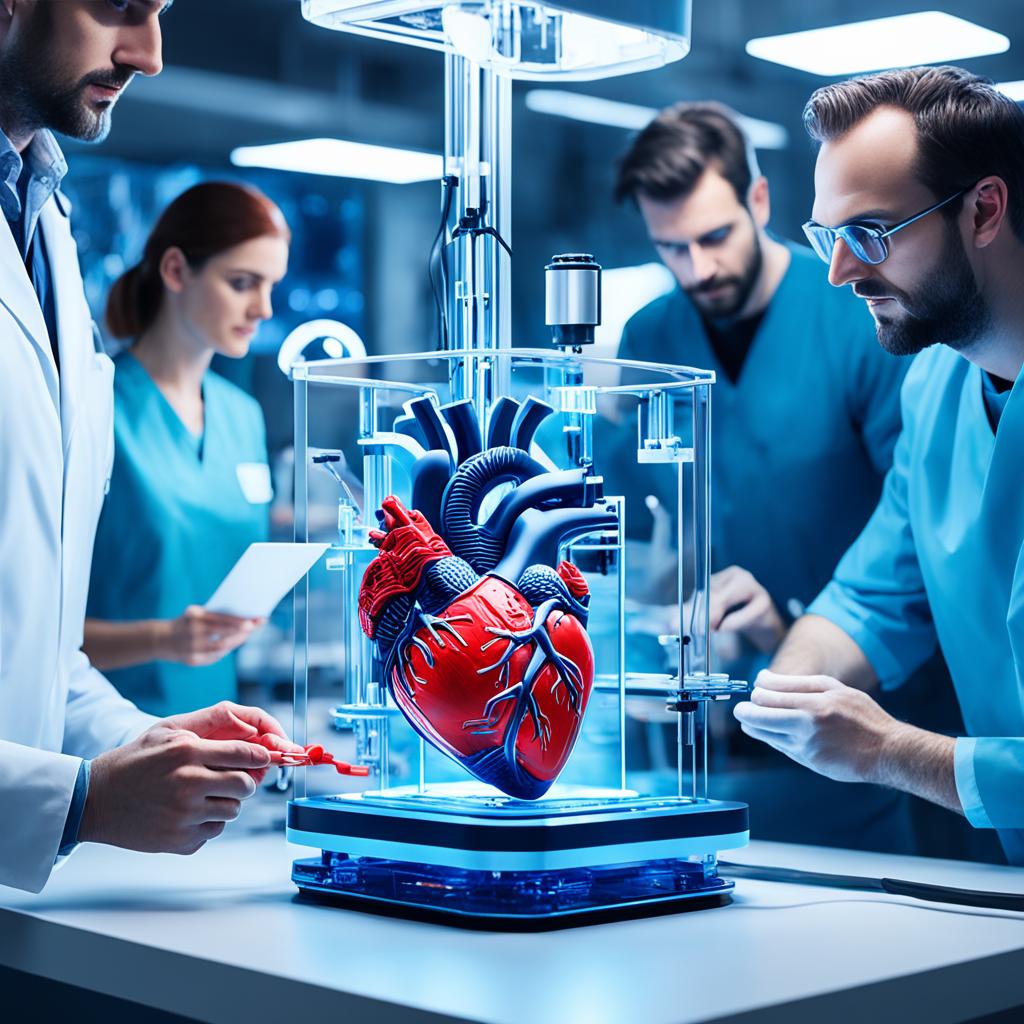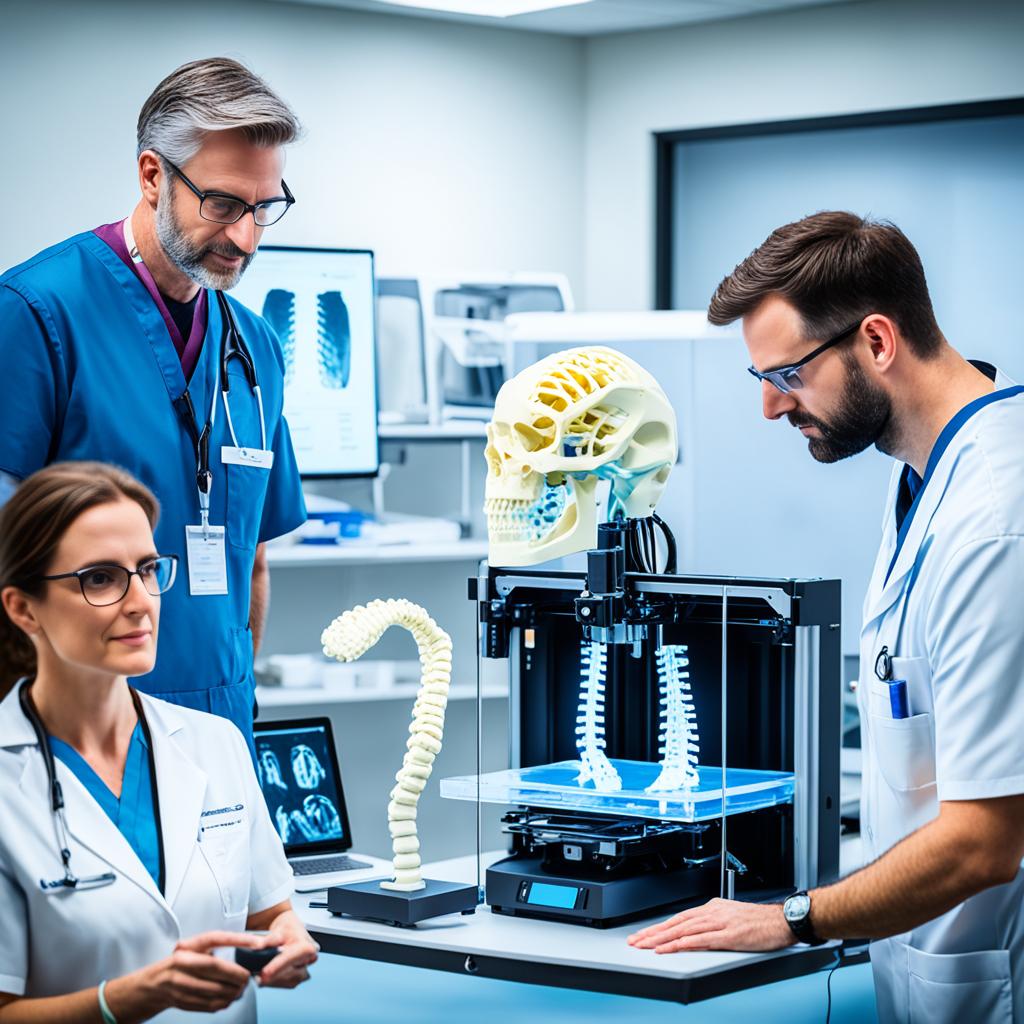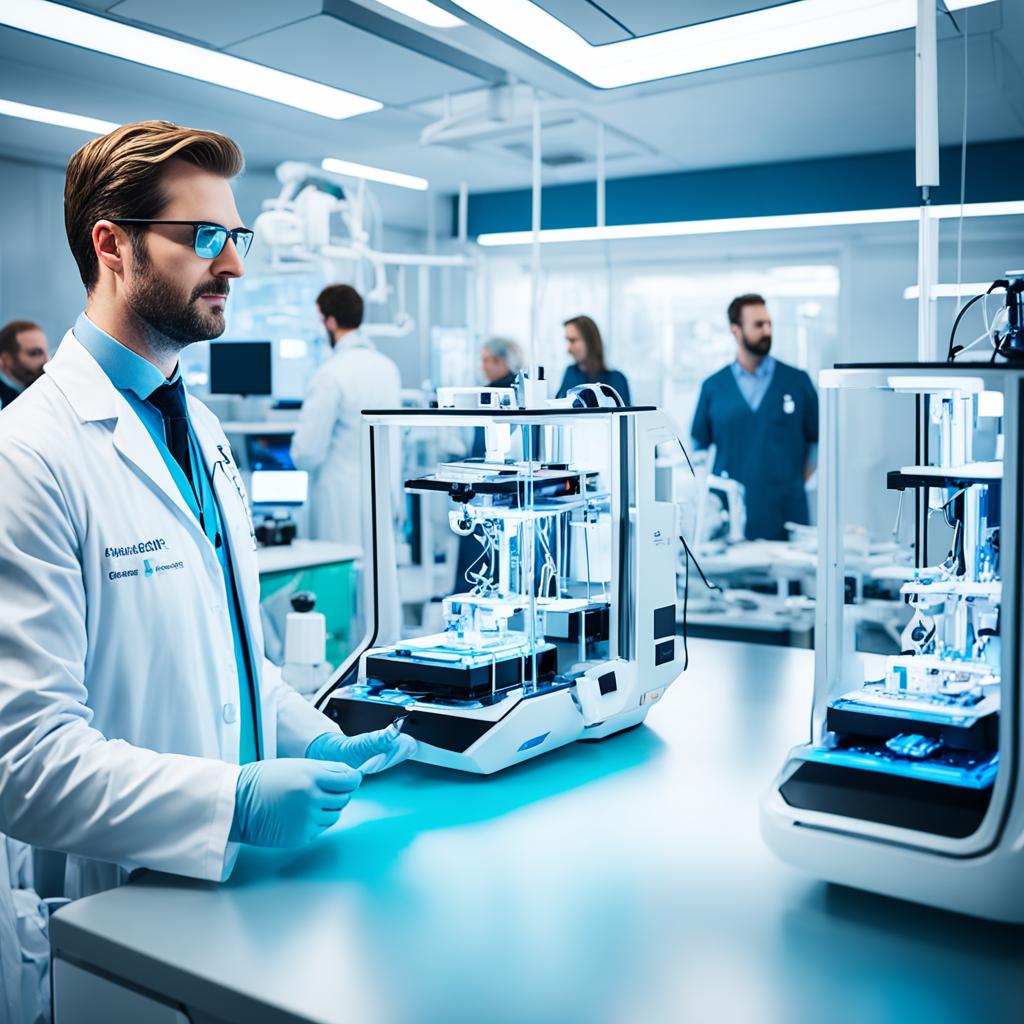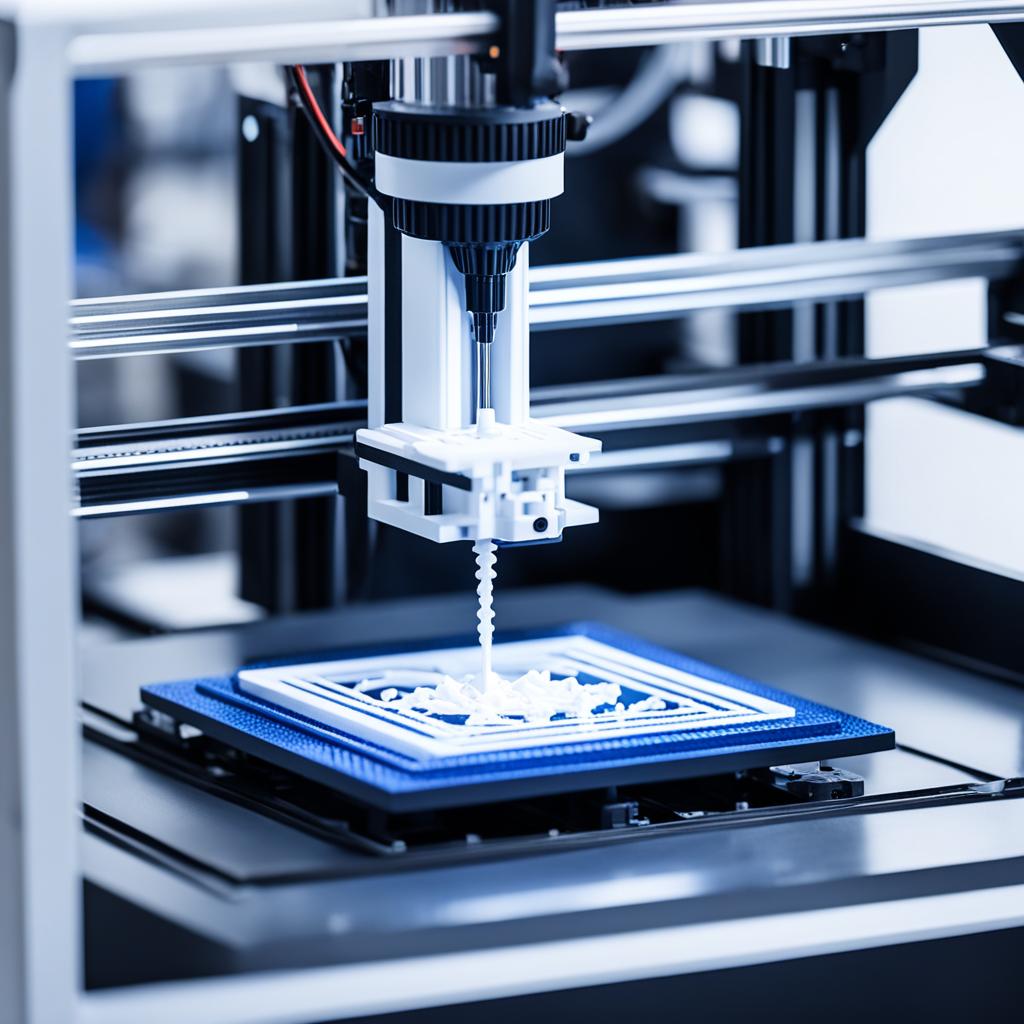3D printing is entering the field of medicine in a revolutionary way. Technology allows the creation of personalized organs, prosthetics, skin and bones through the combination of technology and biology. Through 3D printing, it is possible to reduce waiting time for transplants, improve efficiency during surgeries and post-surgery, and even create organs from the patient's own stem cells, which can reduce transplant rejection. 3D printing also has the potential to replace diagnostic and surgical planning processes with the creation of physical models of the patient's anatomy. The market for 3D printing for medicine is growing rapidly and is estimated to reach more than 4 billion dollars in research and development by 2018. Applications of 3D printing in healthcare are diverse and promise to shape the future of medicine.
Essential topics:
- 3D printing is revolutionizing medicine
- Health benefits of 3D printing
- The future of 3D printing in medicine
- The 3D printing market for medicine is growing
- The applications of 3D printing in healthcare are diverse and promise to revolutionize medicine
- A 3D printing in healthcare allows the personalized creation of organs, prostheses and tissues.
- 3D printing technology can reduce waiting times for transplants and improve surgical efficiency.
- 3D printing in medicine has the potential to replace diagnostic and surgical planning processes.
- The 3D printing market for medicine is growing and promises to reach more than 4 billion dollars in research by 2018.
- The applications of 3D printing in healthcare are diverse and promise to shape the future of medicine.
The 3D Printing Revolution in Medicine
3D printing in medicine is transforming the way treatments and prosthetics are made. The technology makes it possible to create personalized organs, prosthetics and tissues for patients, reducing waiting times for transplants and improving quality of life. Scientists are exploring new 3D printing methods using materials such as resins, metals and human cells to create three-dimensional compositions with biological functions.
One of the most promising advances is bioprinting, where living cells are used as raw materials to create human tissues and organs. This technology has the potential to revolutionize the organ transplant process, reducing rejection and increasing the chances of success.
Furthermore, 3D printing in medicine is also used to create physical models of the patient's anatomy, aiding in diagnosis and surgical planning.
“3D printing in medicine is paving the way for the personalization of treatments and the development of innovative solutions in healthcare.” – Dr. Carlos Silva, specialist in regenerative medicine
Scientific advances and practical applications
3D printing in medicine has shown promising results in several areas. The use of personalized prosthetics allows patients to regain their mobility and quality of life. For example, the use of 3D printing to create customized upper limb prosthetics has provided significant results in terms of comfort and functionality.
In addition to prosthetics, 3D printing in medicine has the potential to benefit patients in need of organ transplants. Creating personalized organs from the patient's own cells reduces the risk of rejection and improves the effectiveness of transplants.
Another application of 3D printing is the creation of 3D models of the patient's anatomy. These models are used by surgeons to plan complex procedures, allowing for more accurate and safer planning.
Challenges and future perspectives
Although 3D printing in medicine has shown significant advances, there are still challenges to be overcome. The complexity of organs such as hearts and kidneys poses an obstacle to large-scale bioprinting. Furthermore, ethical and regulatory issues also need to be considered, ensuring the safety and effectiveness of the procedures.
See too:
However, with continuous technological and scientific advances, 3D printing in medicine has a promising horizon. As the technology becomes more accessible and bioprinting techniques evolve, we can expect an even greater revolution in the way medicine is practiced.
Applications of 3D Printing in Healthcare
3D printing in healthcare offers a variety of innovative applications that are transforming the medical field. This revolutionary technology allows the creation of personalized prosthetics, replacement parts for the human body and even complete organs, opening the door to significant advances in medicine.
One of the most notable benefits of 3D printing in healthcare is the ability to create high-precision customized prosthetics. For example, a patient who requires a prosthetic limb can now have a custom-made solution that perfectly fits their body and specific needs. This not only improves the comfort and functionality of the prosthesis, but also increases the patient's quality of life.
3D printing also has the potential to revolutionize the field of organ transplants. Currently, the shortage of donor organs is one of the biggest challenges faced in healthcare. With 3D printing, it is possible to create personalized organs using the patient's own cells, eliminating the need for donors and reducing the risk of rejection. This innovative approach can save lives and improve the quality of life for millions of people around the world.
In addition to prosthetics and organs, 3D printing can also be used to create physical models of the patient's anatomy, known as biomodels. These models are extremely useful in diagnosis and surgical planning, allowing doctors a clearer and more accurate understanding of the patient's anatomy. This helps reduce risks during surgeries and improve results.
| Applications of 3D Printing in Healthcare | Benefits |
|---|---|
| Custom dentures | – Greater comfort and functionality for patients. |
| Custom organs | – Reduction of the shortage of donor organs. – Lower risk of transplant rejection. |
| Biomodels | – Better diagnosis and surgical planning. |
The innovation of 3D printing in healthcare does not stop there. The technology also has the potential to manufacture personalized medicines, adapted to each patient's needs. This can lead to more effective treatment and reduce medication side effects.
In summary, the applications of 3D printing in healthcare are vast and promising. From creating personalized prosthetics and bespoke organs to manufacturing personalized medicines, this technology is revolutionizing medicine and paving the way for a more innovative and inclusive future.

Success Stories of 3D Printing in Medicine
3D printing in medicine is already being used successfully in several cases around the world. This innovative technology has the potential to revolutionize the way medical treatments and surgical procedures are performed. Here are some stunning examples of 3D printing advances in medicine:
Skull Transplantation at the State University of Campinas (UNICAMP)
Doctors from the State University of Campinas (UNICAMP) performed the first 3D printed skull transplant in Brazil. They used a custom titanium plate created through 3D printing to cover a hole in a patient's skull. This innovative approach allowed for a faster recovery and a return to a normal quality of life for the patient.
Creating Noses, Miniature Hearts and Bones
In addition to skull transplantation, scientists in other countries have made notable advances in 3D printing in medicine. They were able to create noses using 3D printing, allowing facial reconstruction for patients with deformities or serious injuries. Additionally, miniature hearts and bones have also been 3D printed, demonstrating the potential of this technology for creating personalized organs and tissues.
Living Tissue Creation and Drug Testing
Companies like Organovo are using 3D printing to create living tissue and test the effectiveness of drugs. This innovative approach allows for more precise and personalized tests, contributing to significant advances in the development of new treatments and regenerative therapies.
These success stories are just a few examples of the enormous potential of 3D printing in medicine. As this technology continues to evolve, we are likely to see more and more advancements and innovative applications in healthcare.

The Future of 3D Printing in Healthcare
The advancement of 3D printing technology in healthcare is a great indication of the promising future that this area has. With the continued development and increasing accessibility of this technology, hospitals and medical offices will be able to adopt 3D printing on a large scale, revolutionizing medical treatments and procedures.
One of the great expectations for the future of 3D printing in healthcare is the ability to create real organs from the patient's own cells. This would mean a significant advance in solving the shortage of organs for transplantation and reducing the risk of rejection. The possibility of producing personalized organs based on the genetic characteristics of each patient brings a unique and revolutionary perspective to the medicine of the future.
Furthermore, 3D printing has the potential to reduce the costs of various medical procedures, making them more accessible and efficient. Customizing prosthetics and medical devices, adapted to each patient's individual needs, can optimize treatment and improve quality of life. With 3D printing, it will be possible to create specific replacement parts for the human body, such as bones and joints, ensuring greater precision and better adaptation to the organism.
Technological and scientific advances will continue to drive the future of 3D printing in healthcare. Research and development in this area is constantly evolving, allowing medicine to further explore the possibilities of this innovative technology. As new discoveries and applications emerge, 3D printing has the potential to further revolutionize the way medicine is practiced, improving treatment results and patients' quality of life.
Accessibility and Personalization
One of the main advantages of 3D printing in healthcare is its ability to democratize access to treatments and medical devices. With the possibility of customization and local production, patients will be able to receive faster care tailored to their specific needs. Furthermore, 3D printing also has the potential to reduce the costs associated with treatments, making them more accessible to a greater number of people.
Innovation and Research
3D printing in healthcare will continue to drive innovation and scientific research. The development of new materials and printing techniques, along with collaboration between industry and the scientific community, will enable the continued advancement of this technology. With 3D printing, researchers will be able to explore new possibilities in the field of regenerative medicine, such as bioprinting living tissues and creating organ models for testing drugs and treatments.
The path to the future
The future of 3D printing in healthcare is exciting and full of possibilities. As technology advances, new applications and discoveries will continue to shape medicine. 3D printing has the potential to revolutionize the way we treat and care for patients, offering more efficient, personalized and affordable solutions.

Conclusion
3D printing technology in healthcare is bringing a true revolution to medicine and projecting the future in a promising way. With it, it is possible to create personalized organs, prostheses and tissues, resulting in a reduction in waiting time for transplants and a significant improvement in patients' quality of life.
Scientists are increasingly exploring the 3D printing applications in medicine, such as bioprinting of living cells and tissues. Although there are still challenges to be overcome, such as the complexity of organs such as hearts and kidneys, technological and scientific advances are driving progress in this promising area.
The future of 3D printing in healthcare is exciting and has the potential to transform medicine as we know it today. We are about to witness significant advances thanks to technology in medicine, especially in 3D printing. With this, we can believe that we are heading towards a medicine of the future, in which personalization and efficiency will be even greater.



